#south indian male
Explore tagged Tumblr posts
Text


Untitled 3 & 4 by Thota Vaikuntam
#Thota Vaikuntam#Indian art#South Asian#South Indian#south asian contemporary art#traditional clothing#traditional fashion#cultural clothing#folk clothing#hinduism#contemporary art#contemporary indian art#modern indian art#indian painting#south indian male#south indian female#indian fashion#sari#saree
30 notes
·
View notes
Text



HERE WE GO AGAIN!!!!
Just recently, an Indian woman’s brutal rape case shook the entire world to the core, Indian women are out on streets protesting and fighting for her justice, women everywhere are scared for their lives and angry, but men somehow made it about themselves once again.
These shameless south asian men are making and sharing disgusting dark memes on social media about the victim and cracking jokes, but women are not even allowed to speak a word against these bastards cause the pick me pricks won’t stop bringing their swords in, protecting these men who should be lynched to death.
All men are busy "nOt aLL mEning" like always, but women can’t point fingers at them because "i hAvE hUGGeD mEn yOu gUys thEy’rE grEaT"
In India, one in every three women is raped every minute, but let’s not blame all men, it’s just a fEw oF thEm. PlEaSe tHinK bEfoRe yOu sPeAk!!
Men are happily cheering on the victim’s death and going on with their privileged lives, but let’s give them a tissue paper because tHey’re sUbjEcTed tO thE sAme tUrmOil tHe wOmEn fEEl. 🥺
South Asian men are number one in the list of all trash men and yet these dumbfucks cannot stop worshipping their ugly dicks. But enough is enough now!! This happens every time a woman goes through something worst. Every single time the pick mes and their favourite m@les pop out of their garbage dumpsters making it all about these mEn. But not anymore!!!!
Please start calling out these type of people and publicly shame them! I swear if i see any other person saying shit like "nOt aLL mEn bUt aLwAys a mAn" it won’t be my fault whatever happens to them next.
I will blame all men because YES IT IS ALL MEN! ALL MEN ARE TRASH! ALL MEN SHOULD DIE!
PS. the last pic is the screenshot from the instagram story of a Pakistani writer, Umera Ahmed! Also, excuse the B slur!
#yes all men#yes all of them#all men are trash#brown men are trash#kill all males#all men are the same#blame all men#curse all men#south asian men are trash#normalise bullying males#radblr#radical feminism#radical feminist community#radical feminist safe#radical feminist#radical feminists do interact#feminism#justice for moumita#moumita debnath#indian women#pick me behavior
193 notes
·
View notes
Text

From the Gods Themselves🕉️🪷
https://www.instagram.com/menofsouthasia?igsh=NHdndTR0Y3A5d256
#indian men#indian model#hot male model#male model#indian#indian aesthetic#south asian#south asian men
10 notes
·
View notes
Text



Indian prince, Ranganatha. Not finished yet since there's so little male south asian cc for Sims 4 and I wanna cry 😭
25 notes
·
View notes
Photo

One of the more obscure supporting characters in the anime Vision of Escaflowne, Voris is one of the Duke of Freid's trusted advisors and a military commander in his country of Freid. Freid is a fictional country inspired by South East Asia and therefore I chose motifs and architectural details from these cultures for Voris’ portrait.
My character portrait features official animation art along with my own original composition made with Picmix.
#escaflowne#vision of escaflowne#tenkuu no escaflowne#vori#voris#freid#south asian#south east asia#peacocks#Golden#gold and green#dark skinned anime character#older male anime character#white beard#bindi#Indian Style#indian architecture#jewels#paisley#anime#90s anime#90s anime aesthetic#fantasy anime#picmix#gif#gif art#character portrait
9 notes
·
View notes
Text
Top 10 South Indian Hero Name With Photo
South Indian cinema has become one of the most popular genres at the Box Office just becasue of the superb acting of the Top South Indian Hero who has given the most hit movies like Pushpa (Action drama film), KGF (Action-packed movie), and Bahubali (a high-budget movie which created history in South Indian cinema with a great box office collection) that all have captured the hearts of audience…

View On WordPress
#all hero name list with photo#south hero name list#top 10 south hero#top 10 south indian actors male#top 10 south indian actors of all time#Top 10 south indian hero name with photo and photo#Top 10 south indian hero name with photo in hindi#top 20 south indian actors
0 notes
Note
Out of curiosity any red and green critters?
Ahhh, yes, here are some Christmas Critters...

Granular Poison Frog (Oophaga granulifera), family Dendorbatidae, found in Costa Rica and Panama
photograph by Caudatejake

Resplendent Quetzal (Pharomachrus mocinno), male eat a tasty fruit, family Trogonidae, order Trogoniformes, Cerro de la Muerte, Costa Rica
photograph by javier_zurita_photography

Masked Trogon (Trogon personatus), male, family Trogonidae, order Trogoniformes, found in the highlands of western and northern South America
photograph by @ernestoobandog
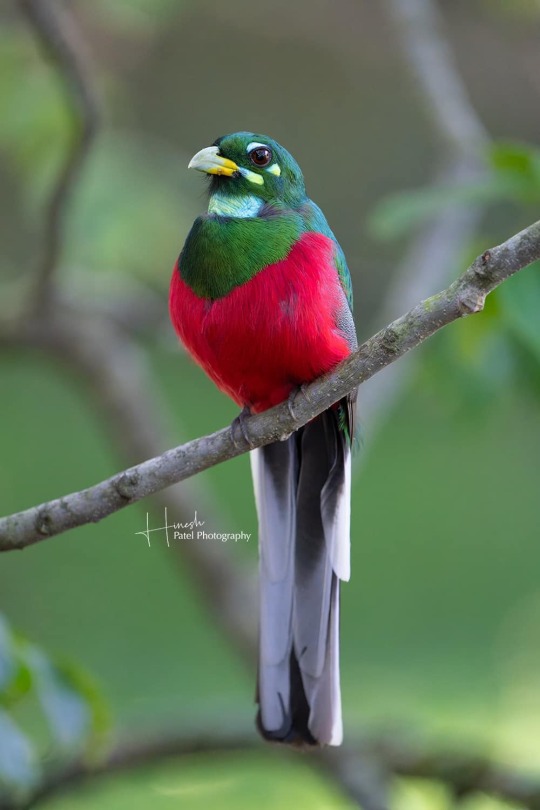
Narina Trogon (Apaloderma narina), male, family Trogonidae, order Trogoniformes, South Africa
photograph by Hinesh Patel

Indian Roofed Turtle (Pangshura tecta), family Geoemydidae, hatchling, found in major rivers of South Asia
photograph by Dick Bartlett
413 notes
·
View notes
Text
also! a very good desi gl movie that hit the bollywood mainstream that i would reeeeally rec is ek ladki ko dekha toh aisa laga (2019) available on netflix!
The Absence of India in Discussions on Queer Asian Media
So, yesterday @lurkingshan tagged me in an ask she got from @impala124 about the absence of India when we're talking about queer Asian media. I was intially just going to reblog it with my thought, but as it kept growing I figured it'd be best to just make my own post. Please read the ask linked above first so this makes sense.
*cracks knuckles* this is going to be the most fun I've had writing a post in ages. (For a little background, I'm a queer Indian, born and raised)
So, this is a very interesting question on a subject I've been rotating in my head for the past several months. There's a lot of different variables that contribute to the noticeable lack of discussion on Indian and South Asian queer media in general, so I'm just going to talk through the ones I've noticed a little randomly.
Talking about Asian media in general, it's well known that the mass popularity of kpop and anime has contributed massively to the increase in popularity of Asian media. If you've been in the Asian media fandom for any amount of time at all, you'll have noticed that media from Korea, Japan, and China gets by far the most attention from international audiences; all East Asian countries. There may be several reasons for this, but in particular, it's no secret that the fetishization of East Asians is a massive proponent in the popularity of media from these countries, while there's no such interest in South Asians. If we shift our focus to queer media specifically, media from these three countries is still extremely popular, with the addition of Thailand and the Philippines to some extent; both South East Asian countries. From what I've seen, there's very little international interest in media from South Asian countries (although, if we're talking about India specifically, I can't exactly say anything. Bollywood has not been good lately). If we talk about queer South Asian media, the scope of interest falls even further. If you'll notice, MyDramaList, one of the most commonly used websites for finding and tracking Asian shows only allows for East and South-East Asian shows. So, that's one reason—there's just not much international interest in Indian media in general. As Shan said in the initial post, it's partially because of a difference in priorities. Korea is notorious for using media to gain global standing, the role of the 'soft power' of Thai bls in the recent bills for equal marriage in Thailand has been widely discussed, the list goes on. Could racism also play a part in the massive gulf of interest in media from East Asian versus South Asian countries? Probably. But I'm not going to get into that too much.
Moving on, there's obviously a massive lack of queer media in India. I think this is greatly exacerbated by the fact that it's very hard to support the people making queer media beyond buying and/or streaming their work. The majority of people engaging with Indian queer media are queer Indians, and a lot of us have to do so in secret because of the society we live in. This means that creators that have to push through several obstacles to publish their work often receive little incentive to continue doing so because of the lack of engagement. Because of the lack of media, international fans are less likely to become interested in queer Indian media, and the cycle continues.
I will say though, contrary to what Shan said, I think Indian media, particularly anything that came out post 2019 might actually be on the easier end of the spectrum when it comes to access. This may simply be bias, so forgive me if I'm wrong here, but from what I've seen, a lot of queer Indian shows are in fact available on streaming sites, and at most you'd need a vpn to access them. I think the two main things that actually hold back queer Indian media from becoming more popular are a lack of noise and it's relatively lower quality.
The main way we find out about new shows in this space is through either word of mouth (well actually, post) or because we follow production houses known for producing media. Because of the sparse nature of both the media and the consumers, there's very few people who learn enough about the media to want to give it a shot. For example, there's a film on netflix called Badhaai Do (hindi for Congratulate Us) that I've been meaning to watch for a while. It centers around a lavender marriage and I've heard a lot of good things about it, so I was slightly surprised to see that most of the people on tumblr I interact with who have been engaging with queer media for far longer than me had never heard of it. There's also a, Indian BL from 2017 called Romil and Jugal that I've written about before here, and I would've never learned of it's existence if not for a friend hearing about it from another friend of hers.
Because there's so little queer indian media, it's natural that the quality leaves much to be desired. The main issue is, because the queer asian media market has become so saturated lately people are becoming a lot more selective with what they watch, and for good reason. This means that queer media from india is simply unable to grow and improve over time, leaving it stagnant. Back in 2016-2018, the overall dearth of queer media from Asia meant that a lot of people were willing to watch shows that were average or even worse. Thailand particularly seems to have benefitted from this, being able to grow and evolve its queer media due to the successes of shows like SOTUS, 2gehter, TharnType and more even recently, KinnPorsche. Queer Indian media will have a much, much harder time with this because of all of the factors I've talked about and more, meaning that it is much harder for queer media to evolve. Honestly, though I haven't been able to watch/read much queer media from India, the stuff I have seen is really quite decent, it's just that it tends to fail in comparison to some of the brilliant stuff we're seeing from other countries. A while a ago, I bought four queer books by Indian authors, and of the three I've read so far, I'd genuinely recommend two, albeit one with quite a few reservations (I'll be writing about them sometime in the future, just haven't found the time yet). While talking about this with @neuroticbookworm, she brought up the excellent point of how Indian media in general has just been of fairly poor quality lately. It seems to me that a lot of it is catered to more conservative audiences, which results in people like me becoming disillusioned with Indian media and simply moving onto things from other countries. It has been a long time since I've watched anything worthwhile come out of Bollywood. So, it becomes even harder for queer Indian shows to be found at all; a majority of their target audience has already forsaken Indian media as a lost cause.
So, those are a bunch of reasons because of which there's not a lot of discussion about queer Indian media in fandom spaces like Tumblr. Something else I'd like to point out is, it's very hard for queer shows in India to gain much traction whatsoever. Live television slots are ruled by the infamous Indian serials, the majority of the audience being people in their late thirties and older, particularly women. And while homophobia is just as prevalent amongst the youth of India as it is amongst older generations, younger people are far more likely to be engaging with queer media, in India at least. This means that it would be near impossible for queer shows to air on live television the way they do in countries like Thailand and Japan. The majority of Indian youth use global streaming services to watch shows, hence the greater concentration of queer shows on service platforms. (Romil and Jugal is something of a dark horse here—I don't believe it was ever aired, but it was produced by a producer who has a few decently popular serials under her belt and is available on an Indian steaming service—another reason I'm determined to research how tf this show ever came into existence) If we talk of movies, the industry is limited by the iron fist of Bollywood, another reason it's very hard for queer movies to be produced and why they're generally found on streaming sites.
There's just not a lot of people who have the balls it would take to make a queer Indian show/movie and push it to the Indian public beyond a streaming service. I mean, we're all seeing what's happening with the Love in The Big City drama right now, and believe me, public backlash in India would be the same, if not much worse. And if no one in India is watching these shows, why would anyone in any other part of the world? There's barely any public figures that would be willing to participate in such a project, so queer media stays underground. Currently, Karan Johar is the most popular—and one of the only—out celebrities in Bollywood, and, well, he's treated as something of a laughing stock by the public. He has one or two queer adjacent shows under his belt as a producer, but once again, they're barely known and available only on Netflix. There was a movie called Dostana in which he played a straight guy pretending to be gay but, well, that speaks for itself. And well, I can't exactly blame him for it, knowing how the Indian entertainment industry is.
To talk a little more about the specific comparison between India and Korea, I think you're fairly accurate in saying that the two countries seem to be roughly on par in terms of homophobia, although that's an extremely vague statement that's rather hard to either prove or disprove. While the difference in international attention towards Korean and Indian media is certainly a major component of the difference in discussion about the queer media from these countries, there's obviously other things that go into it as well. There's this video I watched some time ago on the progression of queer representation in K-dramas that's quite well researched. It's an hour and a half long, so in case you don't have the time to watch it (though I do recommend it), it basically talks about some of the dramas with queer rep that have aired on Korean television and their impact. While it's hard to gauge the level of impact of these shows on the availability of bls and gls in Korea, they certainly had an effect, if only telling the queer population of Korea that they are seen and heard. To my knowledge (although I may be mistaken), no such queer rep has ever aired on Indian television, meaning that there's nothing to push creators to put queer media out there. There have been old movies and shows that depict queerness, but none of them ever reached the sort of the scale where they may have some sort of impact on the industry. As I mentioned earlier, the widespread popularity of K-dramas (and k-pop) does make it easier for creators to make queer media since there's a much higher chance of the shows being successful thanks to the international audience. Bringing back Love In The Big City, the success of the book abroad and the high probability of the show being well received internationally is probably one of the reasons it was able to be produced amongst domestic backlash.
Now, I've been talking a lot about how it's difficult for queer Indian media to gain any sort of international recognition with domestic attention. However, it's not necessarily the case. Here's where I start rambling (I say, as if this post isn't verging on 2k words). It's been proven that the presence of the international market allows for greater creative freedom in spaces beyond television. The best example comes from Korea's very own 'soft power'; K-pop. There's a K-pop group called Dreamcatcher that debuted in 2017 with a rock sound and horror concept that was extremely rare in kpop at the time. They succeeded mainly by focusing most of their promotions to the foreign market, knowing that their concept would not be well liked in Korea. And they succeeded. Today, Dreamcatcher has a sizeable fandom and has even been growing in popularity in Korea, with the Korean public warming up to their genre and having influenced other girl groups to try out similar sounds. We've already talked about the lack of international attention for Indian media, but there's also the issue that the producers of queer Indian media aren't marketing to foreign audiences, which remain ignorant.
That's all I have, this is so long good lord. All in all, there's a bunch of factors that feed into each other creating a cycle which means that, unless there's a break somewhere, queer Indian media will remain unrecognized. I'm excited to see what other people have to say, because this is a topic close to my heart and I'd definitely enjoy seeing more discussions around it.
#as a desi myself yeah south asian media is mostly never ever ever really recognised or taken seriously tbh bc when you mention 'asia'#the first thing that comes to mind is east asia. the other parts of asia are seen as an afterthought.#i mean there are some people i have met in my life that did not even know india or pakistan was part of asia until i had to show them a map#so! 🤷♀️🤷♀️🤷♀️.#but yes. queer desi people DO exist!! (👋👋👋)!!#what i will say is that i agree with op - stuff coming out from india is quite poor but also idk if the tropes indian cinema shows#are that/as digestible as what east asian lgbt media shows. also.#like. desi culture is v v v VERRRYYYYY different to cultures in countries from east asia.#and the backdrop and state of the desi countries (lets take india for example) is ... idk. its not the same as east asian countries.#so i also dont know if the masses would find it 'palatable'.#and so that setting/political/economic climate plays a HUUUUGE role in shaping desi people (not diaspora or pardesi people#but actual desis living in desi countries). like. we are not all well off and rich. most are barely getting by.#idk its v v hard to explain to non desi people what i mean but. like. bollywood is shit right now its just lost all substance.#but other than the mainstream bollywood stuff. like#desi culture and desi countries as a whole are just so soooo different from other east asian countries from where yaoi/bl has stemmed from#that i really dont know just how .... 'palatable' ..... non desi bl watchers would find desi queer media. but yeah.#anyway. im a queer desi and i do wish we got more desi queer media content that could go mainstream.#also. i do wanna add to the point mentioned about the hypermasculinity that exists in desi culture.#like in kpop/jpop/vpop/cpop you will get male singers that incorporate femininity into their art or try experimenting with it.#in desi culture? you will not get that. apart from the hijra community that exists. and dont even get me started on how badly#the hijra community are treated by desi people.#AND adding to the point op made about how desi queer content will never ever really be shown on mainstream tv/cinema.#bc that already has an audience by the MILLIONS of straight desi people. and they won't EVER change that.#so its all on streaming sites. amazon prime and netflix india mostly.#AND by the way this is all just INDIAN queer media content. we havent even TALKED about pakistani (which is practically NON EXISTENT#mostly bc of religious reasons!) queer media or bangladeshi queer media yet!#anyway. if you ARE looking for a good desi gl mainstream movie please watch ek ladki ko dekha toh aisa laga!#desi tag
368 notes
·
View notes
Text
to my indian sisters, may you know your grief and anger are shared by many. may you create a more just world with your voices. you are the path toward a humane and fantastic future, you are the explorers and inventors our world desperately needs. your strength is the pride of the human race.
to my usa-american sisters, may you secure your rights and come together in a new and powerful way, pulling away from other divisions in order to come into your power and wrestle your country back from the self-destructive hands of men. to my native sisters especially, may your resilience in guarding the earth from the violence of men yield fruit. may your people roam their lands freely and without fear once again. may your daughters be rescued from the dim trucks of the military ghouls of a society merely pretending at civilization.
to my afghani sisters, may the world, sun and sky, once again see your beautiful faces. may your voices run as free, wild and far as the wind again in song.
to my sisters in iran, may you you once again dance without fear as boldly as the fire. may the evil world of men around you burn and may your daughters and mothers kick up its ashes. women. life. freedom.
to my south korean sisters, you are fiercer than anyone could have ever imagined, a beacon of hope to women everywhere. you have inspired a generation of women to reclaim what is rightfully theirs and there is no reward we could give that would ever measure up to that gift. i will do my best to follow your lead into freedom.
to my sisters in congo, no one knows the pain you have endured and no one can fathom it. i will keep my ear out for your weeping and your crying. i will not turn my face from you. i will see you.
to my sisters in sudan, you have done your best to bear more than can be humanly possible. i cannot comprehend the volume of your suffering. i cannot fathom it. but i refuse to forget you. i ache for you. may your stomachs once again be full and your bodies free of the pain of hunger. may you find shelter from the desert and the wild men that roam it.
to my tigrayan sisters, you should never have had to suffer for the hatred and greed in men's hearts. may your world be once again filled with friends instead of enemies.
to my sisters trapped and corralled in deutschland, may you break out from the display windows and trafficking pens. may your body find rest and comfort. may you find home and love. may you go to bed at night and fear nothing. may the district one day go completely dark.
to my sisters in palestine, may you see the day you rebuild what had been utterly destroyed. may your every need be met and your grief validated. may your anguish be taken from you. may abundance surround you and may there be laughter once again in your homes.
to the immigrant women, the working class women, the mothers, the schoolgirls, the women in cities and countries facing rising rates of femicide and assault, the victims of cyber-bullying . . .
there are so many of us, suffering at the hands of incessant male violence. no matter the age, income, or ethnicity. no matter the location. it is everywhere. and so i grieve with all of you, i am angry on all your behalf, i hope for all of us. and i will do what i can to let you know you are not alone in the world. we are here, all of us, together.
may we all be free.
413 notes
·
View notes
Text
In addition to my Monkey Man post from earlier, the always kind & sweet Aparna Verma (author of The Phoenix King, check it out) asked that I do a thread on Hijras, & more of the history around them, South Asia, mythology (because that's my thing), & the positive inclusion of them in Monkey Man which I brought up in my gushing review.
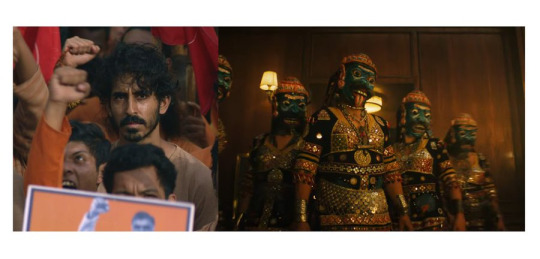
Hijra: They are the transgender, eunuch, or intersex people in India who are officially recognized as the third sex throughout most countries in the Indian subcontinent. The trans community and history in India goes back a long way as being documented and officially recognized - far back as 12th century under the Delhi Sultanate in government records, and further back in our stories in Hinduism. The word itself is a Hindi word that's been roughly translated into English as "eunuch" commonly but it's not exactly accurate.
Hijras have been considered the third sex back in our ancient stories, and by 2014 got official recognition to identify as the third gender (neither male or female) legally. Pakistan, Nepal, Bangladesh, and India have accepted: eunuch, trans, intersex people & granted them the proper identification options on passports and other government official documents.
But let's get into some of the history surrounding the Hijra community (which for the longest time has been nomadic, and a part of India's long, rich, and sometimes, sadly, troubled history of nomadic tribes/people who have suffered a lot over the ages. Hijras and intersex people are mentioned as far back as in the Kama Sutra, as well as in the early writings of Manu Smriti in the 1st century CE (Common Era), specifically said that a third sex can exist if possessing equal male and female seed.
This concept of balancing male/female energies, seed, and halves is seen in two places in South Asian mythos/culture and connected to the Hijra history.
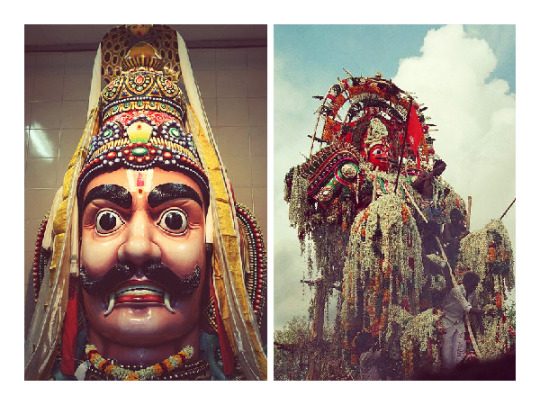
First, we have Aravan/Iravan (romanized) - who is also the patron deity of the transgender community. He is most commonly seen as a minor/village deity and is depicted in the Indian epic Mahabharata. Aravan is portrayed as having a heroic in the story and his self-sacrifice to the goddess Kali earns him a boon.
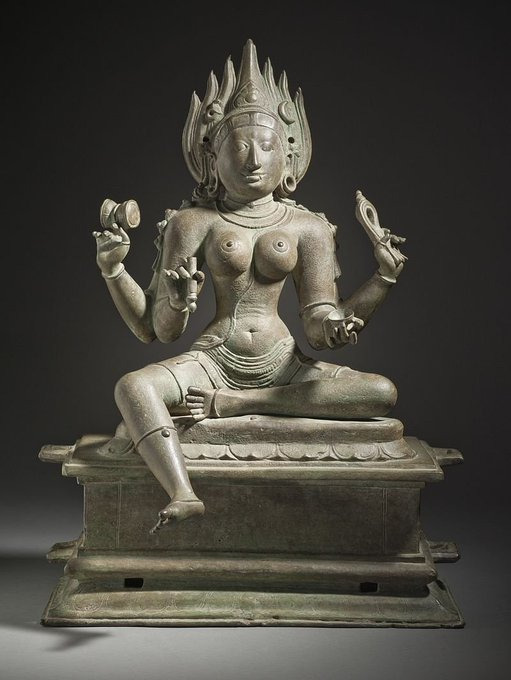
He requests to be married before his death. But because he is doomed to die so shortly after marriage, no one wants to marry him.
No one except Krishna, who adopts his female form Mohini (one of the legendary temptresses in mythology I've written about before) and marries him. It is through this union of male, and male presenting as female in the female form of Mohini that the seed of the Hijras is said to begun, and why the transgender community often worships Aravan and, another name for the community is Aravani - of/from Aravan.
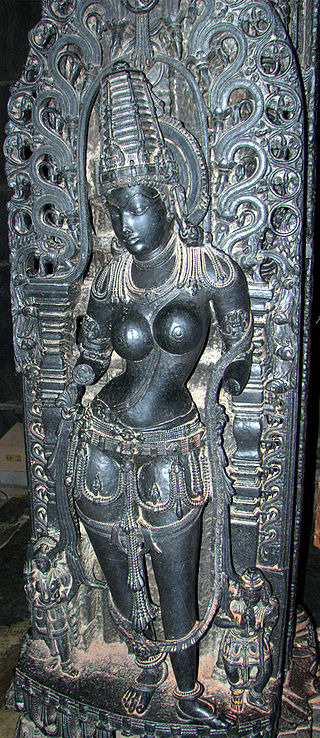
But that's not the only place where a gender non conforming divine representation can be seen. Ardhanarishvara is the half female form of lord Shiva, the destroyer god.
Shiva combines with his consort Parvarti and creates a form that represents the balancing/union between male/female energies and physically as a perfectly split down the middle half-male half-female being. This duality in nature has long been part of South Asian culture, spiritual and philosophical beliefs, and it must be noted the sexuality/gender has often been displayed as fluid in South Asian epics and the stories. It's nothing new.

Many celestial or cosmic level beings have expressed this, and defied modern western limiting beliefs on the ideas of these themes/possibilities/forms of existence.
Ardhanarishvara signifies "totality that lies beyond duality", "bi-unity of male and female in God" and "the bisexuality and therefore the non-duality" of the Supreme Being.
Back to the Hijra community.
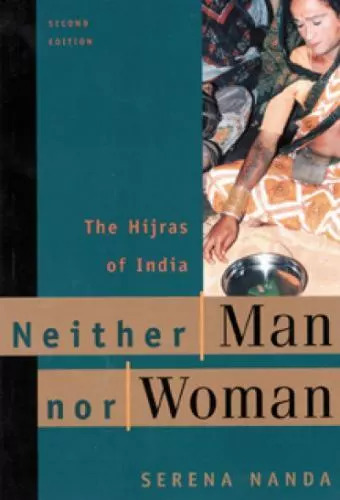
They have a complex and long history. Throughout time, and as commented on in the movie, Monkey Man, the Hijra community has faced ostracization, but also been incorporated into mainstream society there. During the time of the Dehli Sultanate and then later the Mughal Empire, Hijras actually served in the military and as military commanders in some records, they were also servants for wealthy households, manual laborers, political guardians, and it was seen as wise to put women under the protection of Hijras -- they often specifically served as the bodyguards and overseers of harems. A princess might be appointed a Hijra warrior to guard her.
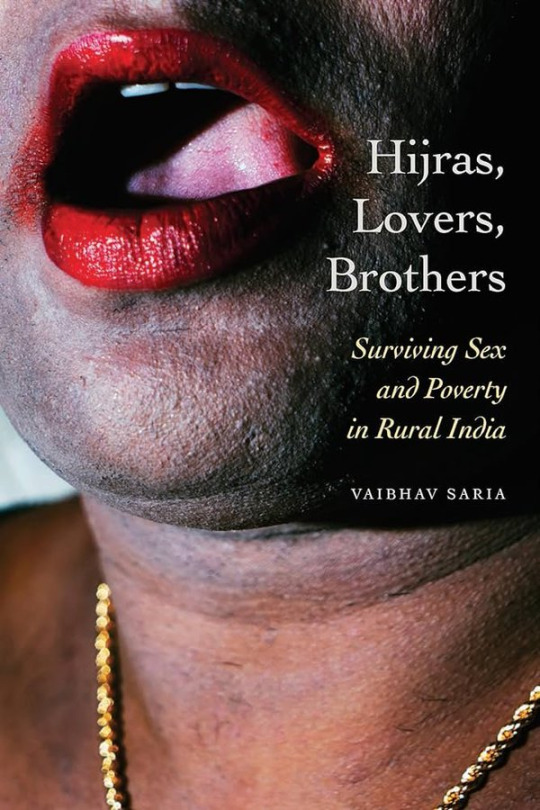
But by the time of British colonialism, anti-Hijra laws began to come in place folded into laws against the many nomadic tribes of India (also shown in part in Monkey Man with Kid (portrayed by Dev Patel) and his family, who are possibly
one of those nomadic tribes that participated in early theater - sadly by caste often treated horribly and relegated to only the performing arts to make money (this is a guess based on the village play they were performing as no other details were given about his family).
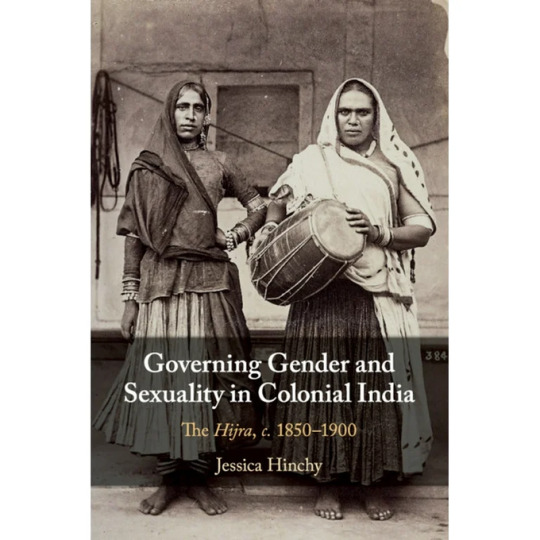
Hijras were criminalized in 1861 by the Indian Penal Code enforced by the British and were labeled specifically as "The Hijra Problem" -- leading to an anti-Hijra campaign across the subcontinent with following laws being enacted: punishing the practices of the Hijra community, and outlawing castration (something many Hijra did to themselves). Though, it should be noted many of the laws were rarely enforced by local Indian officials/officers. But, the British made a point to further the laws against them by later adding the Criminal Tribes Act in 1871, which targeted the Hijra community along with the other nomadic Indian tribes - it subjected them to registration, tracking/monitoring, stripping them of children, and their ability to sequester themselves in their nomadic lifestyle away from the British Colonial Rule.
Today, things have changed and Hijras are being seen once again in a more positive light (though not always and this is something Monkey Man balances by what's happened to the community in a few scenes, and the heroic return/scene with Dev and his warriors). All-hijra communities exist and sort of mirror the western concept of "found families" where they are safe haven/welcoming place trans folks and those identifying as intersex.
These communities also have their own secret language known as Hijra Farsi, which is loosely based on Hindi, but consists of a unique vocabulary of at least 1,000 words.
As noted above, in 2014, the trans community received more legal rights.
Specifically: In April 2014, Justice K. S. Radhakrishnan declared transgender to be the third gender in Indian law in National Legal Services Authority v. Union of India.
Hijras, Eunuchs, apart from binary gender, be treated as "third gender" for the purpose of safeguarding their rights under Part III of our Constitution and the laws made by the Parliament and the State Legislature. Transgender persons' right to decide their self-identified gender is also upheld and the Centre and State Governments are directed to grant legal recognition of their gender identity such as male, female or as third gender.
I've included some screenshots of (some, not all, and certainly not the only/definitive reads) books people can check out about SOME of the history. Not all again. This goes back ages and even our celestial beings/creatures have/do display gender non conforming ways.
There are also films that touch on Hijra history and life. But in regards to Monkey Man, which is what started this thread particularly and being asked to comment - it is a film that positively portrayed India's third sex and normalized it in its depiction. Kid the protagonist encounters a found family of Hijras at one point in the story (no spoilers for plot) and his interactions/acceptance, living with them is just normal. There's no explaining, justifying, anything to/for the audience. It simply is. And, it's a beautiful arc of the story of Kid finding himself in their care/company.
#hijra#trans representation#monkey man#dev patel#transgender#trans rights#trans rights are human rights#third sex#indian history#indian culture#colonialism#imperialism#south Asian mythos#South Asian myths#Aravan#Iravan#Mahabharata#hindu mythology#hindu gods#kali goddess#krishna#hindu mythology art#Ardhanarishvara#Shiva#Parvarti#sexuality#gender fluid#fluid sexuality#trans community#transgender rights
808 notes
·
View notes
Text
All The Women’s News You Missed This Week
3/10/25-3/17/25
Furious protests erupt in Bangladesh after an 8-year-old girl succumbs to injuries she sustained after being brutally raped. Indian health workers strike for better working conditions. The Queen sends a letter of support to Giselle Pelicot. The Supreme Court will take up conversion therapy bans in a Colorado case and in Kentucky state lawmakers have voted to protect the practice. Ukranian women’s organizations struggle without US funding.
In a piece of good news, Fatou Baldeh, a campaigner against the practice of FGM, has been named Time’s Woman Of The Year.
Want this in your inbox instead? Subscribe here
Opinion and Investigative:
As the US backslides, can China claim moral high ground on women’s rights?
Why US abortion restrictions matter beyond borders
Serbia’s Femicide Record Undermines Claims of Progress on Women’s Rights
The GOP’s Next Target? No-Fault Divorce and Women’s Right to Leave
Lorraine Kelly: Diversity push is leaving working-class people behind
Women, girls bear brunt of cyberbullying against persons with disabilities
“IT’S ALL IN YOUR HEAD”: ENDOMETRIOSIS PATIENTS AND THE PROMISE OF ALTERNATIVE MEDICINE
LGBT:
Supreme Court will take up state bans on conversion therapy for LGBTQ+ children, in a Colorado case
Angry response to how transgender lawmaker Sarah McBride introduced
A new anti-LGBTQ+ bill in Hungary would ban Pride event and allow use of facial recognition software
North Dakota Senate rejects resolution asking US Supreme Court to overturn same-sex marriage ruling
Kentucky GOP lawmakers vote to protect conversion therapy
Women’s Rights:
Iran: Authorities target women’s rights activists with arbitrary arrest, flogging and death penalty
Louisiana woman pleads not guilty to a felony in historic abortion case
Risks of state abortion reporting mandates outweigh the benefits, an advocacy group says
Iran using drones and apps to enforce women's dress code
Kentucky lawmakers add specific medical exceptions to the state’s near-total abortion ban
Driving ban puts brakes on young women in Turkmenistan
Ukrainian women’s rights organisations struggle as US aid suspended
Male Violence:
Search for US student in Dominican Republic intensifies
Things to know about the former megachurch pastor charged with child sexual abuse
Airman charged in killing of Native American woman who went missing 7 months ago in South Dakota
UN experts accuse Israel of sexual violence and 'genocidal acts' in Gaza
'He strangled me without asking' - experts say choking during sex now normal for many
Sean 'Diddy' Combs pleads not guilty to updated indictment
Disabled author swamped by hate speech after social media post on feminism
Women Fight Back:
Haitian women commemorate International Women’s Day spotlighting broken justice system
How Iran's 'Woman, Life, Freedom' Protests Live On Today
FGM campaigner honoured with Time magazine title
Teacher ordered to remove signs from classroom, including one saying 'Everyone is welcome here'
Mother of woman who died after Georgia’s six-week abortion ban calls for law’s repeal
Women Radio amplifies African feminist voices
Texas midwife accused by state’s attorney general of providing illegal abortions
BBC presenters settle sex and age discrimination dispute
Queen sent letter of support to Gisèle Pelicot
Yasmeen Lari rejects Israel's Wolf Prize over "continuing genocide in Gaza"
Fierce protests as eight-year-old rape victim dies in Bangladesh
India's frontline health workers fight for better pay and recognition
US arrests second pro-Palestinian Columbia University protester
Women in the News:
Democrat Rebecca Cooke to again challenge US Rep. Derrick Van Orden
Brown Medicine professor and doctor deported to Lebanon despite having valid visa, court filings claim
Woman arrested in US for allegedly holding stepson captive for 20 years
WATCH: Woman trapped in car films as tornado hits Central Florida
'For holding a wombat, thousands threatened my life'
Judge says Fani Willis violated open records law, orders her to pay $54K in attorneys’ fees
Feel Good Stories and Feminist History:
The forgotten story of the woman who invented the dishwasher
The Mexican women who defied drug-dealers, fly-tippers and chauvinists to build a thriving business
Early members of Philly’s roller derby league face off in a match circa 2005-2006. Jeff Fusco/The Conversation U.S., CC BY-ND Philly Roller Derby league turns 20 - here’s how the sport skated its way to feminism, anti-racism and queer liberation
'We couldn't get jobs in sexist garages - so we set up our own'
5 Major Historical Movements Led By Women In Rajasthan
Arts and Culture:
‘Just be radical’: the feminist artist giving Matisse a modern punk twist
The film exploring loneliness of migrant workers
'Santosh' review: Feminist police drama confronts harsh truths
Shabana Azmi On Feminism And Her Powerful Role In ‘Dabba Cartel’
Chimamanda Ngozi Adichie: I want my books to be read in Africa
Cannes award-winning actress Dequenne dies at 43
Legendary Russian composer Gubaidulina dies in Germany
Book Review: Patrycja Humienik’s powerful debut poetry collection is a conundrum worth mulling over
13 Nonfiction Books to Read This Women’s History Month
As always, this is global and domestic news from a US perspective, covering feminist issues and women in the news more generally. As of right now, I do not cover Women’s Sports. Published each Monday.
111 notes
·
View notes
Note
I would love more desi superheroes 🤩
WOULDN'T WE ALL!!! When DC did their Asian Festival of Heroes one-shot in 2021 and every single story was about an East Asian (except for Damian, whose story was just horrible), they should've known to step up their game!! Some South Asian superheroes I can think of are Solstice (Kiran Singh) and Swamp Thing (Levi Kamei). Jinx is also a prominent South Asian non-hero.
Cass actually did meet an Indian superhero named Aruna Shende in her Batgirl (2000) annual. I think Aruna is pretty cool!! She's a shapeshifter who works as a stuntperson in the Indian movie industry, inspired by Cass to start fighting crime. She's also gender-fluid!! She says she doesn't know if she's a male or female because of her abilities, and they even use him/her in the bio at the end (though primarily uses she/her). She hasn't been used since, but she did get a cameo in DC Pride 2024!!

Adding her to the list of Batgirl (2000) characters I want brought back. Idk how many people even read the annual but Aruna is the best part for sure!!
Anyway, if anyone's looking for more Indian rep, support Ram V. Not only is he an excellent writer, he seems dedicated to introducing more Indian rep in comics. He created Levi Kamei and he's currently writing New Gods. If you're not reading him you really are missing out, go support his books (if you can!!).
#dc comics#cassandra cain#aruna shende#ask#honestly she deserves so much better than 1 appearance only#twas the year 2000 and dc decided to introduce a gender-fluid indian superhero and never do anything with him again#does anyone have strong opinions on the annual? I actually quite like it#not as american as you'd think for a story about the indian caste system#anyway so happy she appeared in dc pride 2024. people are still gunning for her and it's beautiful!!!
110 notes
·
View notes
Text
Floral egg crab - Atergatis floridus
This is the floral egg crab, or Atergatis floridus, a beautiful but poisonous crab that can be found in the tropical Indo-Pacific.
@hispaatra here is the pretty green crab ! ! :DD


Description
Atergatis floridus has an oval, relatively narrow carapace which has a smooth surface and smooth margins. The carapace is greenish or greenish-blue-brown and is marked with a lace-like pattern and is made up of a fine network of fine white or yellow lines. It has large claws which are equal sizes and which are smooth with black spoon-shaped tips and which may be larger in males than females. The pereiopods are squarish in shape and quite thick with lilac edges. The width of the carapace is 8 to 10 centimetres.
Distribution and habitat
Atergatis floridus can be found in the eastern Indian Ocean from south east Asia, south to Australia where it reaches Rottnest Island in Western Australia and possibly Sydney in the east, its range extends eastwards across the western pacific as far as Hawaii.
It is an inhabitant of the neritic zone and prefers coral and rubble, it is also largely nocturnal. Atergatis floridus is a host to the isopod Gigantione hainanensis and the rhizocephalan barnacles Loxothylacus aristatus, Loxothylacus corculum, Sacculina gordonae, Sacculina robusta, Sacculina spinosa and Sacculina weberi.
Bonus
Here is a cute poststamp with Atergatis floridus on it :

~~~~~~~~~~~~~~~~~~~~~~~~~~~~~~~~~~~~~~~~~
Image sources:
1.
https://nl.pinterest.com/pin/402298179242522124/
2.
https://www.inaturalist.org/taxa/469186-Atergatis-floridus
3.
https://www.marinespecies.org/aphia.php?p=image&pic=18709&tid=209061
~~~~~~~~~~~~~~~~~~~~~~~~~~~~~~~~~~~~~~~~~
Text references:
1.
https://en.wikipedia.org/wiki/Atergatis_floridus
2.
http://www.wildsingapore.com/wildfacts/crustacea/crab/xanthidae/floridus.htm
#hyperfixation#biology#aquatic biology#marine biology#Floral egg crab#Atergatis floridus#crabs#beloved mutuals#<3
49 notes
·
View notes
Note
omgg i always imagine tim with an indian/south asian reader. saw it mentioned on another blog/ask but making chai for him to get him to stop drinking coffee (and he gets addicted to chai instead). imagining him trying to deal with the aunties.. he’s rich AND smart?? and he isn’t racist?? and he doesn’t hit you?? they think you bribed him.
Not to be racially insensitive and ofc all our experiences r different but this is so common (Im north Indian with a little Spanish in me shifting to NY and had a black ex I was with for 1 yr) Honestly i see so many similarities in asian, black and brown cultures...idk why? like why do we all have nosy aunties and why do all our parents try to first hide us from the opposite gender and then arrange marriage us? And why have we all been hit by either a chapaal , belt or slap?? I have a caucasian roommate and she is always so confused by our traditions.
Tim Drake x diff culture reader-
You're dating a white boy- you get one of two reactions- "our kid is GOING TO GET A GREEN CARD AND WONT BE RANDOMLY KICKED OUT FOR NO REASON AT ALL" or " ay dumbass how will a white boy understand our culture(the classic "what will others say")
Well little did they know that everyone will say good things. he is so respectful and handsome (AND RICH) they love him so much.
I bet the kids just rlly like him. Your male cousins hate him cuz UK the traditional comparison that parents make. Even the older uncles will be a little hesitant cuz sorry not sorry- tim is a pretty boy.
That is until a roberry or a drunk uncle becoming abusive at an event happens and with a simple twist of the arm and kick to the ankle tim has the person disarmed and under control....without a single wrinkle on his shirt like its a daily routine for him( It is though). now the uncles and younger male cousins love him.
the older aunties always loved him. They get to squish his cheeks and he gets them all presents (personalized ones cuz he got the stalking gene and he just wants to seem like the perfect husband material to you) . He got the little girl cousins swooning cuz he is literally prince charming and he just talks so sweetly to everyone. (probably keeps candy in his pocket- learned it from jason )
its hard not to love him tbh HE IS SO UNDERRATED AHHHH
#•#Tim Drake x Reader#Tim Drake x You#Tim Drake x Y/N#Tim Drake Fluff#Tim Drake Angst#Tim Drake Comfort#Tim Drake Headcanons#Tim Drake Imagines#Red Robin x Reader#Red Robin x You#Red Robin x Y/N#Batfamily#Batfamily x Reader#Batfamily Fluff#Batfamily x You#Batfamily x Y/N#Batfamily Headcanons#Batfamily Imagines#Batboys#Batboys x Reader#Batboys Fluff#Batboys Headcanons#Batboys Imagines
210 notes
·
View notes
Text
Fish of the Day
Today's fish of the day is the day octopus!

The day octopus, also known as the big blue octopus, and scientific name Octopus cyanea is a well known Indopacific cephalopod. Found in the Indian and Pacific ocean, this octopus can be found as far North as Hawaii to as far South as the Solomon islands, and found from the Hawaiian islands to as far East as the Red Sea and East coast of Africa. These octopi in particular are known for their color changing abilities. The name big blue comes from this color changing ability in fact, as sacs of pigments under the skin can be contracted at will to better match the surrounding environment for camouflage, and courting of mates. This color changing can also be used for communication between octopi, transmitting information of predators and prey nearby.

The diet of the octopus is made up of fish, crabs, and mollusks. This octopus in particular is diurnal, spending its time awake and active during the day, as opposed to the majority of other cephalopods of which are nocturnal. Small prey is eaten immediately when hunting, but larger prey ,such as adult crabs, must be taken back to the den of the octopi. The prey taken to this den are then killed, with crabs being killed with a single venomous bite, and mollusks being killed by strategic drilling into their shells. These shells and hard carapaces are then discarded around the mouth of the den. These dens are regularly constructed and abandoned, with each octopus spending only around 35 days in each den before moving to find another. This is due to the fact that these octopi are heavily predated on by seals (especially monk seals!), whales, eels, and sharks. To protect from these predators, other than the creation and moving of dens, these octopi have the ability to squirt ink at hunters. Concealing the water so they can get away, along with rare cases of them attacking with their sharp beaks.

Breeding and reproduction can take place year round in the day octopus. Once they reach their sexual maturity, at a size of 8cm, with females larger than males, these octopi will search out another octopus. Males will mate with multiple females at a time, attempting to avoid the females cannibalistic tendencies as long as possible. After the mating however, the sucker on the male octopus begins expanding, continuing to do so as the octopi declines and eventually dies. The female however will survive a few months longer, remaining beside her eggs no matter what. She will slowly die for lack of food and exhaustion as she guards over her eggs until they hatch. These eggs hatch into planktonic larvae, which float in the current unable to swim for the first few weeks of their lives. After that they'll survive anywhere from 12-15 months, able to reach a maximum size of 22cm, and living through only one mating season.

That's the day octopus, everyone! Have a wonderful Wednesday!
#Octopus cyanea#day octopus#big blue octopus#octopus#fish of the day#aquatic biology#marine biology#animal facts#animal#animals#informative#education#aquatic#aquatic life#nature#ocean
59 notes
·
View notes
Text
Voices from the Stacks: Phillip G. Hubbard

Image: Phillip G. Hubbard in May 1990 (Faculty and Staff Vertical Files RG01.0015.003).
Phillip G. Hubbard was an engineering professor, administrator, civil rights champion, and distinguished member of the University of Iowa community. He was the first Black professor at the university and spent more than 40 years advocating for students and providing counsel to six presidents. In 1971, he became the first Black vice president at any Big 10 university.

Image: Hubbard in 1966, after being appointed dean of academic affairs (Faculty and Staff Vertical Files RG01.0015.003)
Hubbard was born in Missouri in 1921, but his mother moved the family to Des Moines, Iowa—where the schools were desegrated—so her children could have a better education. Hubbard attended North High School and shined shoes to save up money for college. He first came to the UI as an undergraduate student in 1940, when the university was still largely, if informally, segregated. Black men were excluded from university housing, and all students of color were discouraged from using the cafeteria and attending social events. Like many Black male students, Hubbard lived with a local Black family during his undergraduate years because of housing discrimination in Iowa City. Years later, Hubbard and his wife, Wynonna, would welcome Black students into their own home.
In 1943, Hubbard enlisted in the Army reserves but eventually returned to the UI to finish his BS in electrical engineering, graduating with honors in 1947. That same year, he was hired by the university as a research engineer, making him the first Black faculty member at the UI. He went on to earn an MA in hydraulics and mechanics, a PhD in engineering, and became an assistant professor in 1954.

Image: 1968 University of Iowa Hawkeye Yearbook
As the civil rights movement reached its peak throughout the United States, Hubbard helped to found the Committee on Human Rights to combat housing and employment discrimination in at the UI and in Iowa City. They investigated complaints and lobbied for Fair Housing ordinances, which were adopted by the city in 1964.
Hubbard was appointed dean of academic affairs at the UI in 1966, becoming the first Black administrator at a university in the state of Iowa. In 1971, he was named vice president of student services. During his leadership tenure, he was a staunch advocate for students of all walks of life. He fought for better undergraduate support and engagement and was admired on campus for his willingness to listen to student concerns. His steady relationship with students helped see the university through the turbulence of the Vietnam War and protests that rocked the campus.

Image: Hubbard featured in the 1967 University of Iowa Hawkeye Yearbook. He was known around campus for his dedication to uplifting students’ voices
In 1967 Hubbard spearheaded the Rust, Iowa, and Le Moyne for Expanding Educational Horizons (RILEEH) program, which created partnership between the UI and predominantly Black colleges in the rural south. RILEEH facilitated student exchanges, teacher training, and graduate research to help support under-resourced academic institutions in Mississippi and Tennessee. Later, Hubbard would recruit faculty from these same institutions to help build the emerging Afro-American studies program.
As part of his work to promote cultural studies at UI, Hubbard chaired a newly created committee on Afro-American studies in 1968. He encouraged students of all backgrounds to take classes in this emerging field. He saw inclusivity and cultural competency as vital in higher education, believing the university should produce well rounded students who are prepared to live and work in a diverse world. He advocated for the Afro-American Cultural House and the Chicano Indian American Cultural Center (now called the Latino Native American Cultural Center), understanding the importance of creating a welcoming and supportive environment for minority students.
To that end, Hubbard created Opportunity at Iowa in 1987, a program aimed at increasing diversity at the university through the recruitment and retention of minority students and faculty. This included scholarships, outreach to underserved public schools in Iowa, and summer workshops for highschoolers.

Image: Daily Iowan clipping announcing the newly created Afro-American Cultural Center. Hubbard was a huge advocate for the house and helped them secure their first location in 1968.
After more than 40 years of service, Hubbard retired from the UI in 1990, though he continued to advise Opportunity at Iowa. A year later, Union field (located south of the Iowa Memorial Union) was renamed Hubbard Park in his honor. In 2001, he received a lifetime achievement award from the Iowa City Human Rights Commission.
Hubbard passed away in 2002 at the age of 80. Today numerous scholarships, medals, and awards bare the Hubbard name, including the Philip G. Hubbard Human Rights Award and the Wynonna G. Hubbard Scholarship. As we reflect on his life and legacy, we should strive to honor Hubbard’s commitment to human rights and his dedication to uplifting students of all racial, ethnic, and socioeconomic backgrounds.

Image: Hubbard with Students in 1983 (Frederick W. Kent Collection of Photographs).

Image: Dedication of Hubbard Park in August 1991 (Daily Iowan Archives)

Image: Hubbard Park today
To learn more, view the finding aid for the Phillip G. Hubbard Papers (RG99.0248), or visit us in person or online at the Iowa Digital Library. You can also search the Daily Iowan archives for articles on Phillip Hubbard’s work, or check out his autobiography My Iowa Journey: The Life Story of the University of Iowa's First African American Professor on InfoHawk+.
-Anne M, Olson Graduate Research Assistant
41 notes
·
View notes